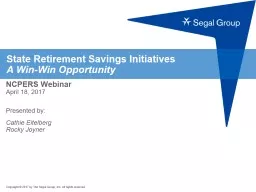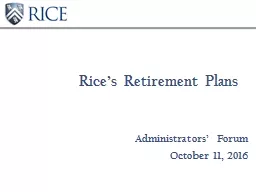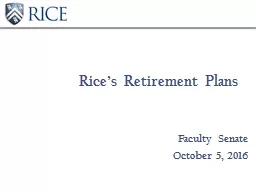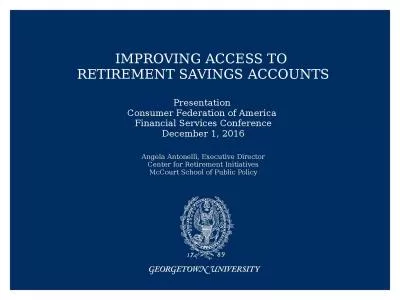PPT-Retirement Plans & the New SECURE Act
Author : cappi | Published Date : 2023-11-07
Kershaw K Khumbatta PLLC 1455 Highway 6 South Suite A Sugar Land Texas 77478 Tel 2813138006 SECURE Act Setting Every Community Up for Retirement Enhancement Act
Presentation Embed Code
Download Presentation
Download Presentation The PPT/PDF document "Retirement Plans & the New SECURE Ac..." is the property of its rightful owner. Permission is granted to download and print the materials on this website for personal, non-commercial use only, and to display it on your personal computer provided you do not modify the materials and that you retain all copyright notices contained in the materials. By downloading content from our website, you accept the terms of this agreement.
Retirement Plans & the New SECURE Act: Transcript
Download Rules Of Document
"Retirement Plans & the New SECURE Act"The content belongs to its owner. You may download and print it for personal use, without modification, and keep all copyright notices. By downloading, you agree to these terms.
Related Documents














